Do you ever wish your pets could talk? We probably all do. We want them to tell us what they feel or want. But, obviously, they communicate with their body language.
Rabbits are cute when they jump, twist, and run across the room. It feels like they are happy and relaxed when they are doing this. But isn’t it worrisome when they seclude themselves at a corner, or they let out a shrill scream?
Let’s crack the code and unfold rabbits’ interesting behaviors and body language.
Understanding Rabbit Feelings with Body Language
If you can tell a person’s feelings through their eyes, you can do too, on rabbits. Although it is vague to tell what they feel through their eyes without any verbal cues, you can understand rabbits more through their ears and body posture.
An excellent way to start understanding your rabbit’s feelings is through their ears.
If the rabbit’s ears are close, facing upwards, and pointing outwards, it shows they are happy and relaxed. Meanwhile, if their ears are flattened and leaning on their back, your rabbit is worried or anxious.
More so, what’s in their heart shows through their body language.
Happy and relaxed rabbit

We have mentioned what the rabbit’s ears look like when happy and relaxed. But, what does their body show when they are in this state?
You can usually see rabbits lying down and fully extending their body when they are in a happy and relaxed state. Rabbits even stretch out their back legs to show that they are in a relaxed state.
But, do you know what’s cute? When your rabbit jumps into the air, all four paws are off the ground and make a slight twist while on the air before it lands.
Angry rabbit
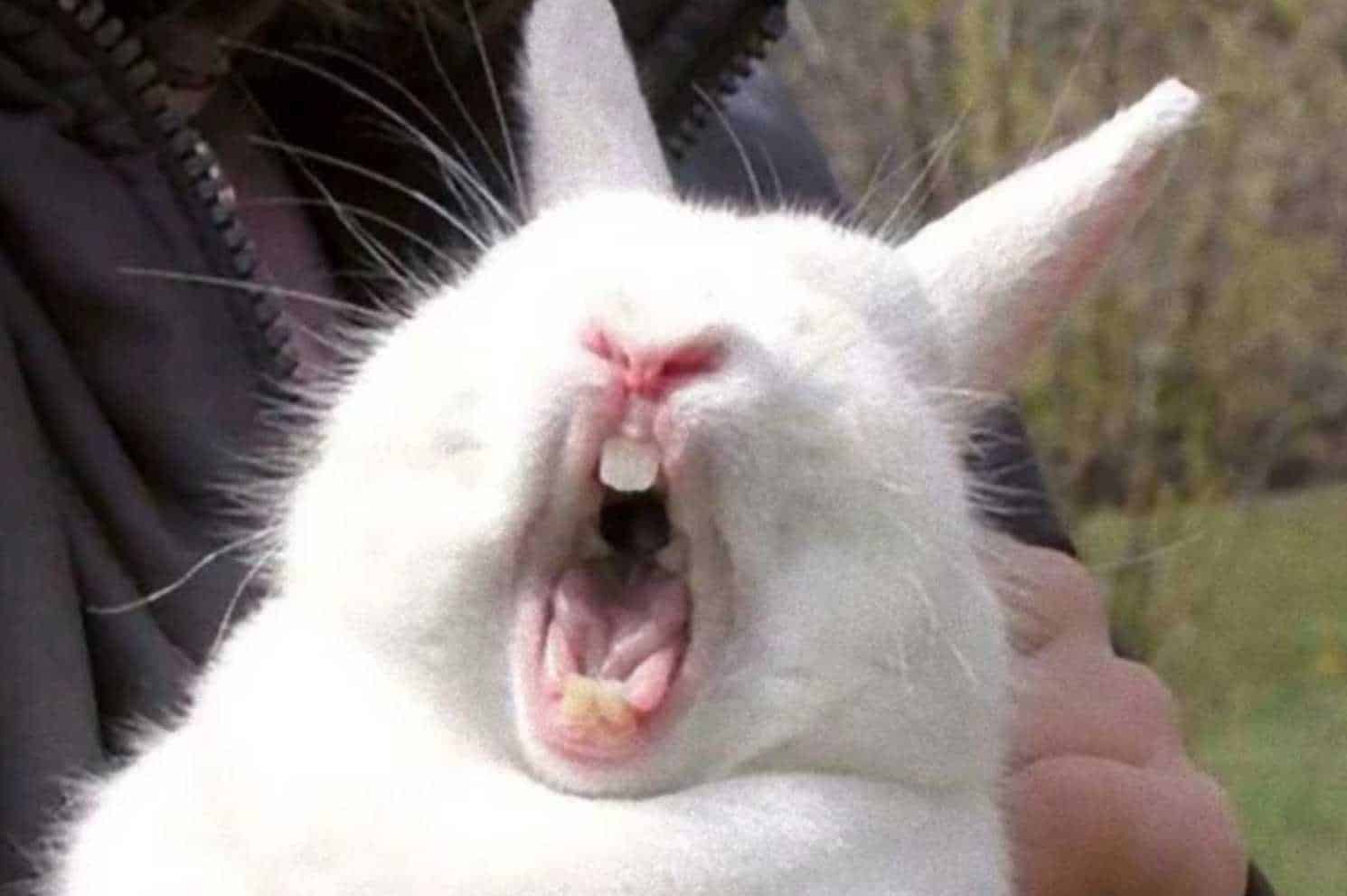
You can tell when your rabbit is angry and unhappy. Rabbits turn away and flick their back feet.
If their ears are pointed upward and faced outwards or look held back, they are mad and want you to stay away. Sometimes rabbits display a boxing stance or growls when they are angry.
Worried rabbit
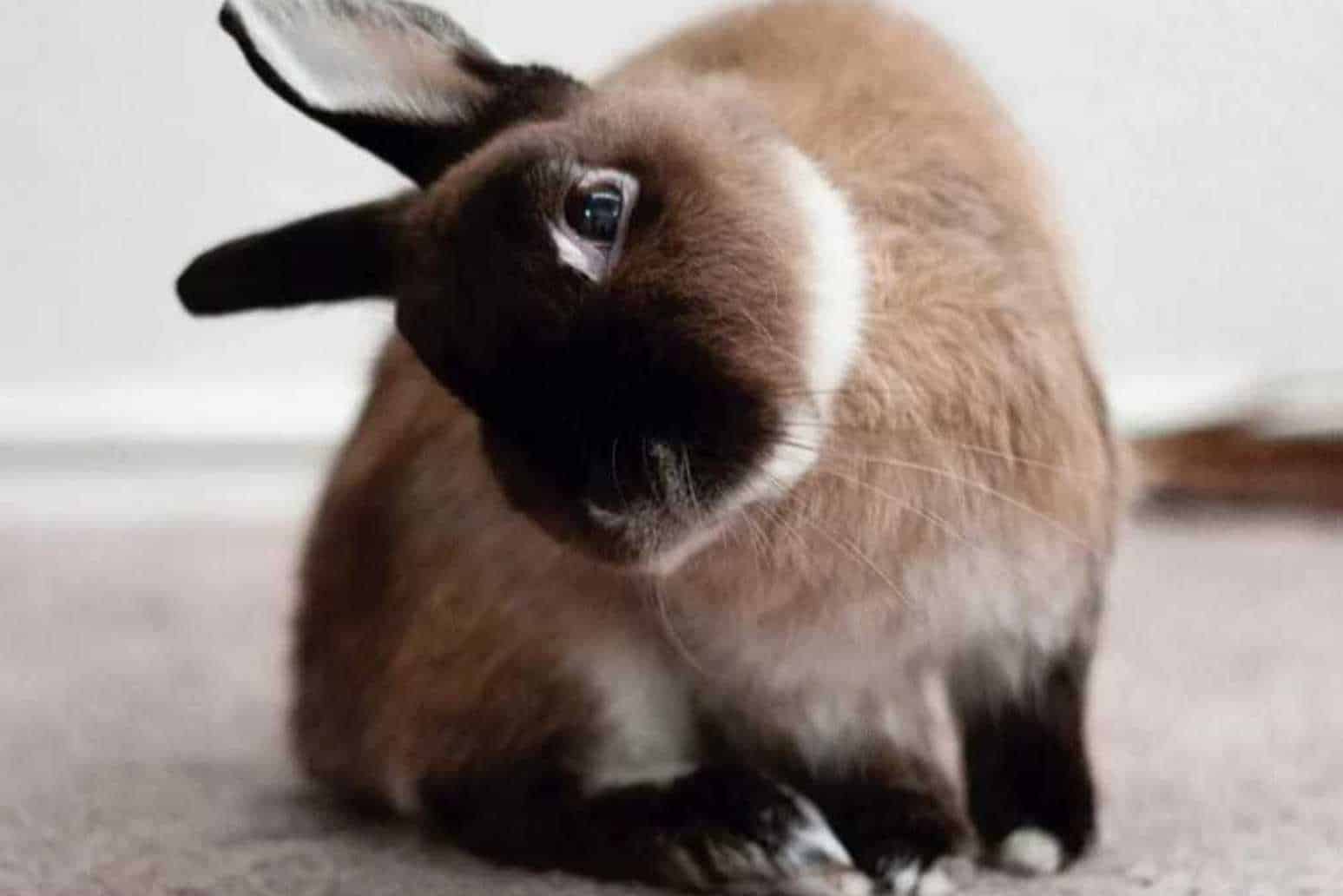
There are two ways to determine if your rabbit is worried or anxious. The clearest sign is they hide and does not want you to go near them.
Meanwhile, if you have observed your rabbit in a crouching position, tensing their muscles, and holding their head flat to the ground, while their pupils are dilating, it shows they are anxious and worried about something.
It is interesting to understand their feelings through their body language, but rabbits communicate through their body quirks other than what they feel. Let’s dive into some common bunny behaviors to understand why they are doing those postures and actions.
15 Common Rabbit Body Language Explained
Understanding your pet’s body language is the first step to bonding with them. We have briefly talked about understanding rabbit emotions through their body language.
Rabbits use their ears, eyes, and body to tell us what they mean. All we need to do is keep an eye on their body language.
Binky
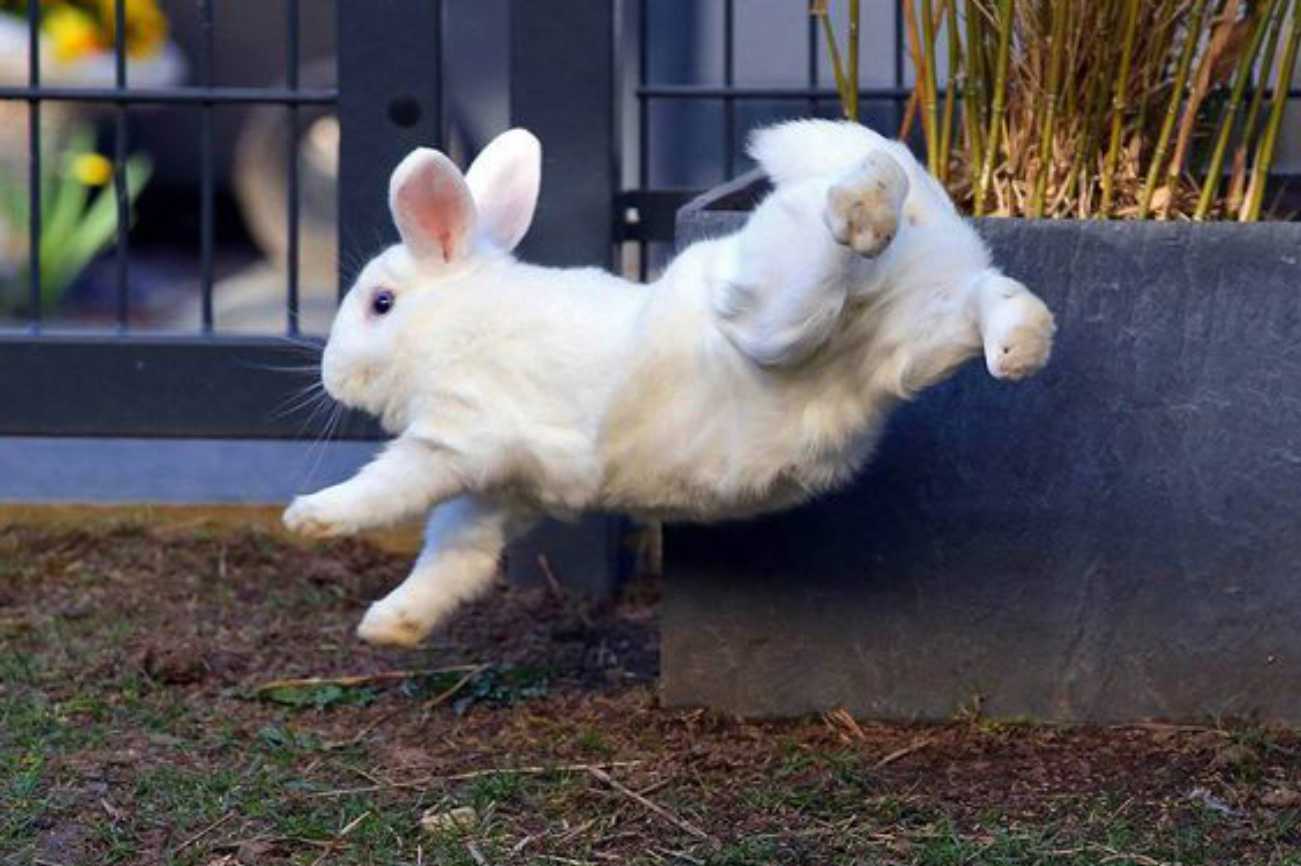
We have mentioned earlier rabbits jump and do a little twist when they are happy; that cute act they are putting on is called a binky. There are two types of binky, full and half binky.
Full binky is when the rabbit jumps in the air and twists their body, while rabbits fast flick their ears or twist their neck when doing a half binky.
If your rabbits often do a binky, it means they feel contented, comfortable, and safe in their environments.
Boxing
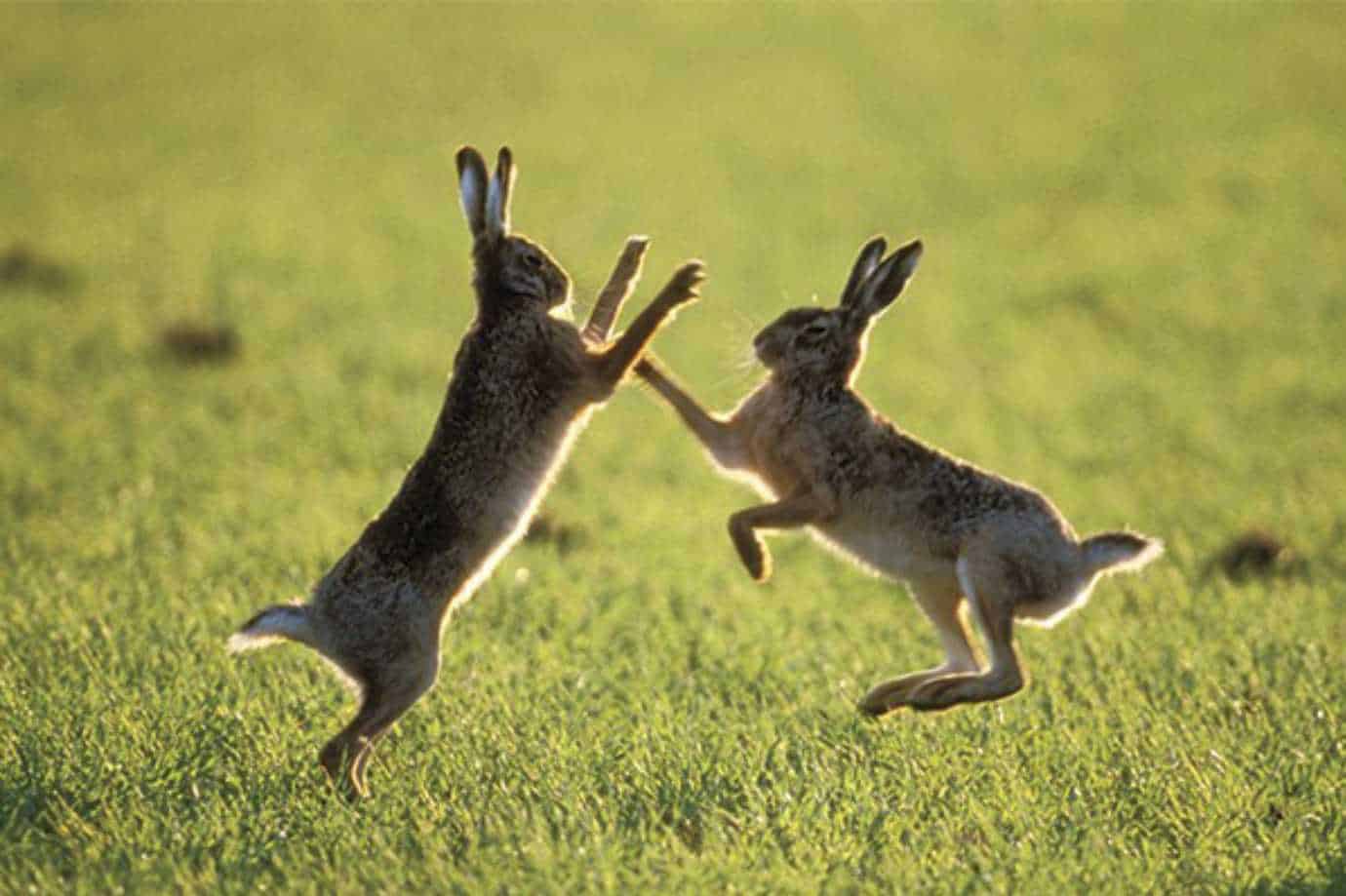
Rabbits exhibiting boxing behavior look like they are about to fight; they stand up on their hind legs and raise their paws. If you see your rabbit doing this action, they are aggressive and ready to fight.
Chewing
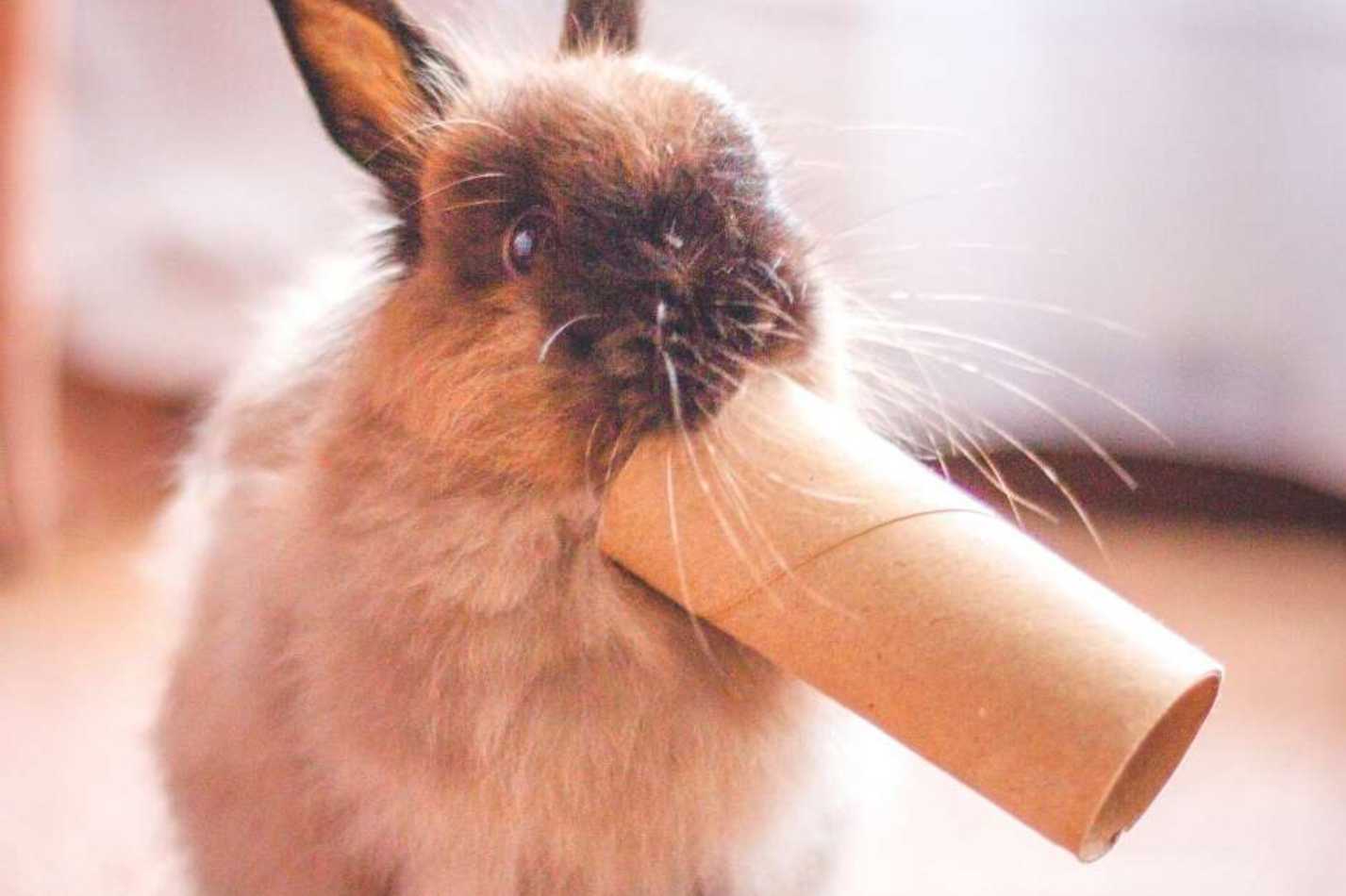
Overgrown teeth are common in rabbits, and their teeth constantly grow; that’s why it is important to feed them with high-quality hay to grind their teeth. If you have not given them the proper meal, rabbits trim their teeth throughout your house.
It is an instinct for rabbits to chew on everything, furniture, clothes, wires, anything they can chew. That’s why you have to make your house rabbit-proof.
Circling
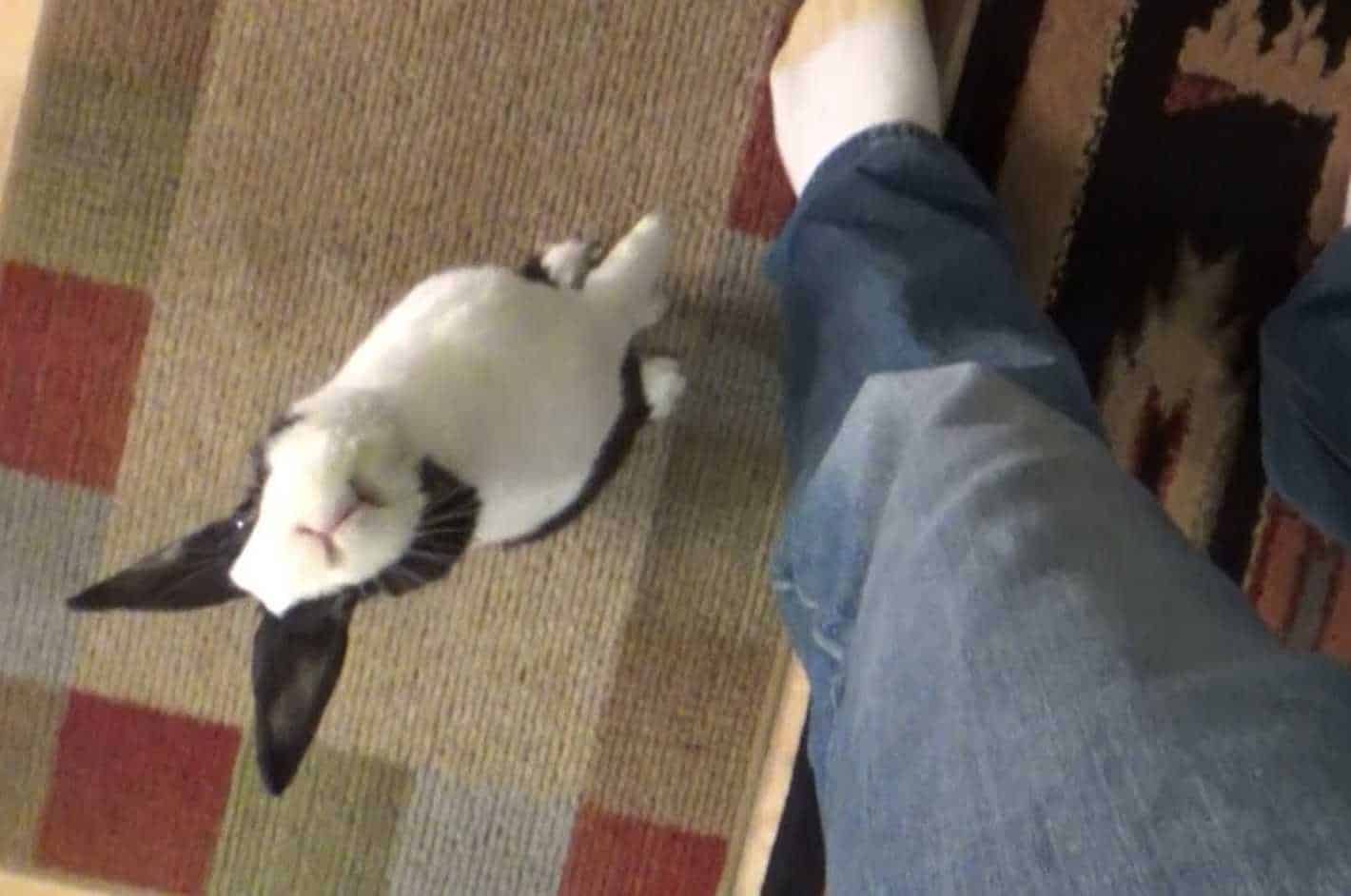
It is not only pet owners who share their love for their pets. When rabbits are circling your feet, it shows a sign of love and excitement. But rabbits can be a bit tricky. Sometimes, rabbits circle around you when they expect or smell a treat from you.
Digging
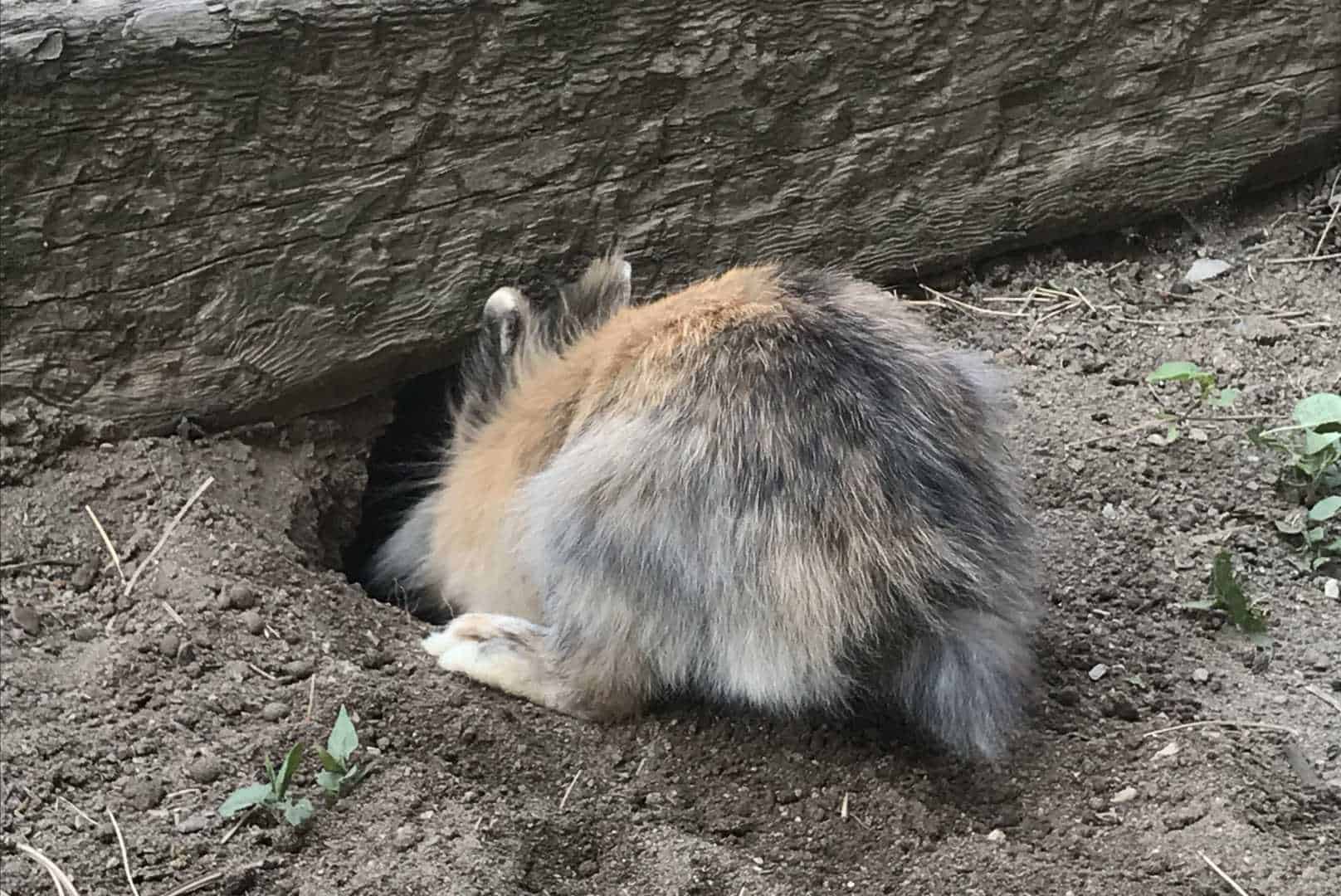
Rabbits in the wild create burrows to survive, and this natural behavior is evident even on domesticated rabbits. If you notice your rabbit, especially female, is digging into the corners of your house or under the doors, they might be nesting.
You cannot prevent them from digging, but you can protect your house by putting plastic mats on the corners of the room.
Flattening
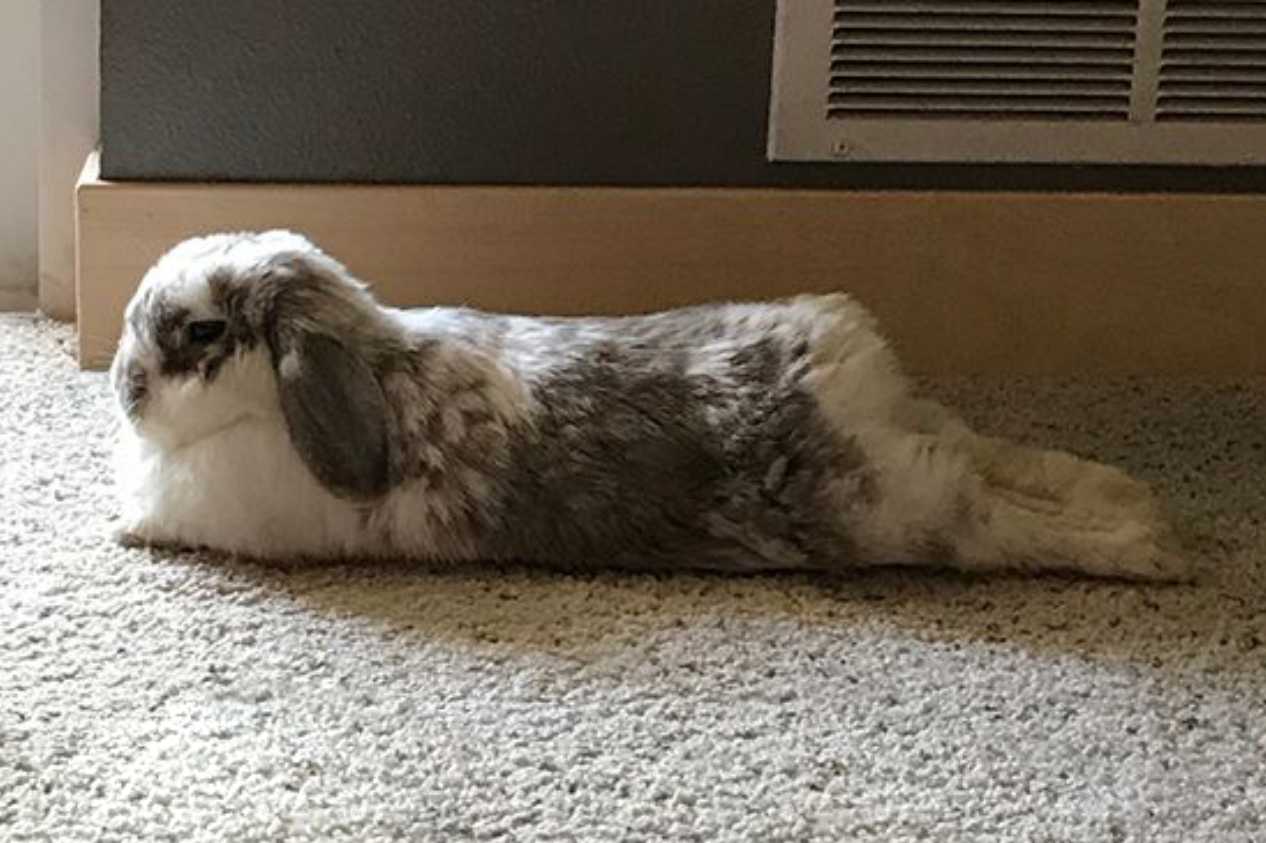
You have to carefully observe if your rabbit is flattening itself or lying down. When rabbits flatten, paws on the ground, and their tail extended, they are ready to run.
It is quite different from being comfortable and relaxed. Flattening is a common sign that the rabbit is submissive or scared.
Flopping
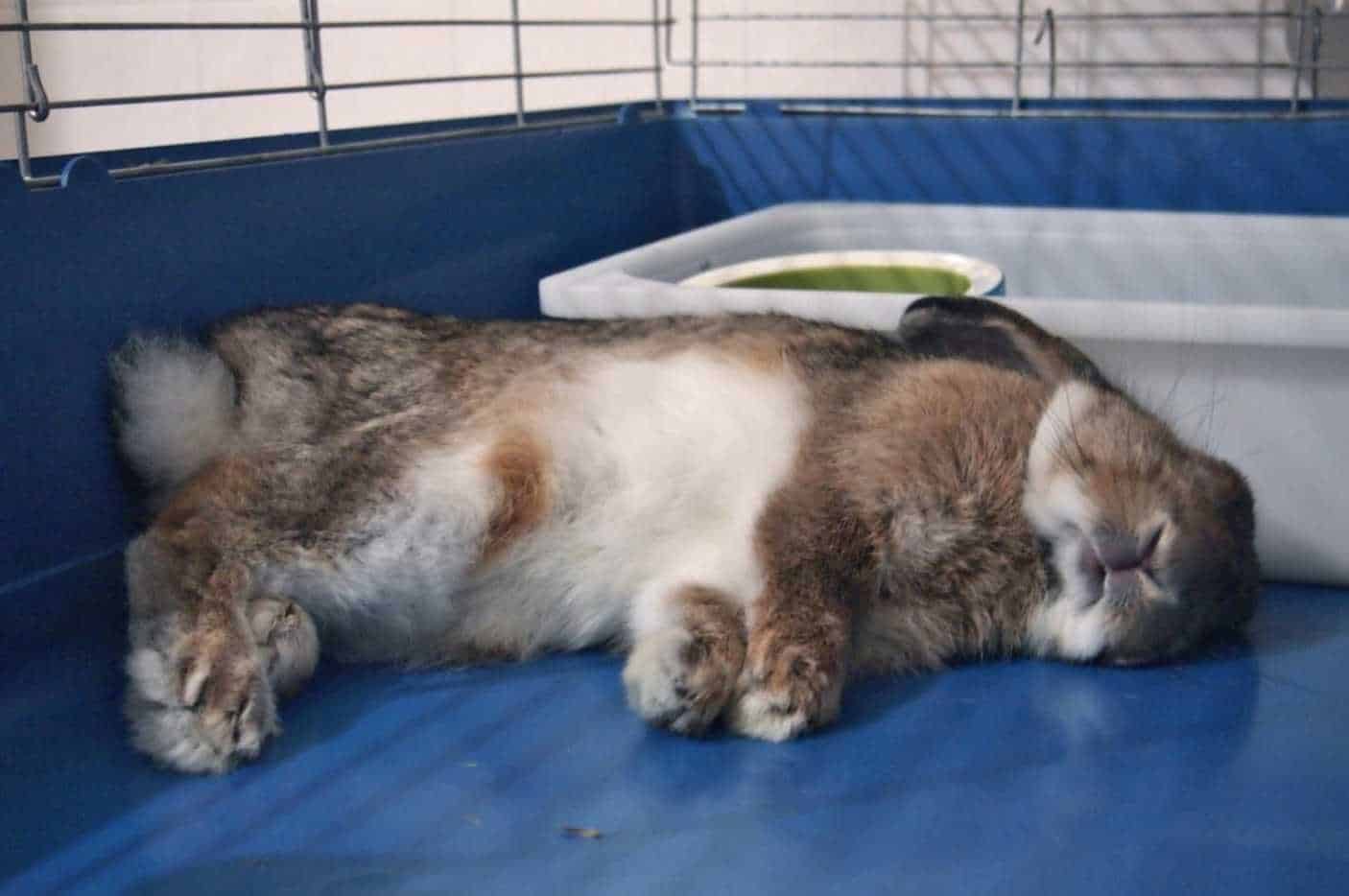
You might be shocked at first when your rabbits’ flop. If you are a new rabbit owner, rabbits love to throw themselves onto their side, roll their way onto their back, and sleep.
Apart from making them adorable to look at, rabbits do this as they completely feel safe and comfortable.
Some first-time rabbit owners are worried when they see their rabbits flopping; watch them closely, and you can see them breathing. Rabbits flopping is a sign that they completely trust you.
Grooming
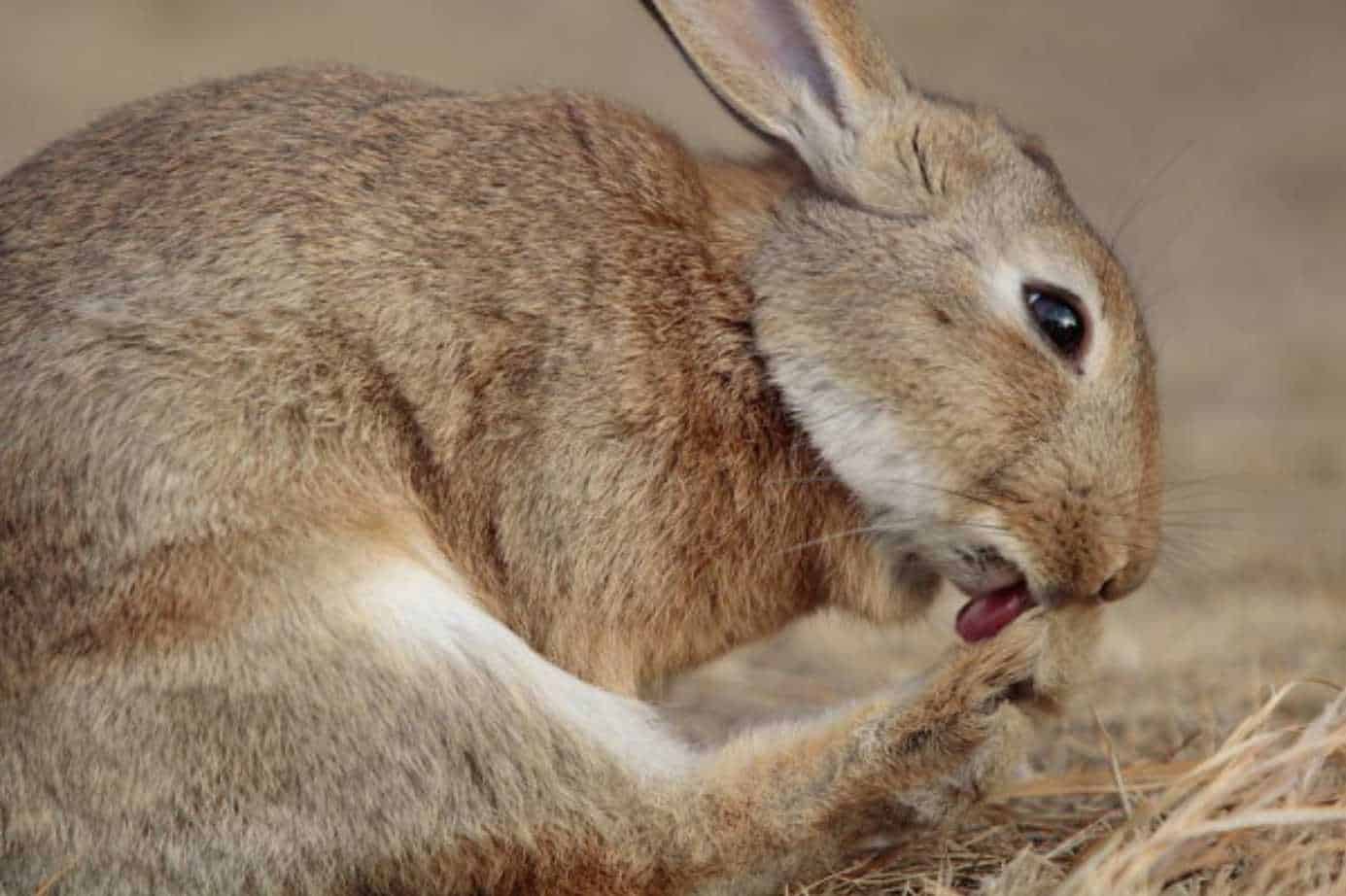
The same with cats; rabbits groom themselves. Watching when rabbits use their tiny paws to clean their ears and face is mesmerizing.
Rabbits are modest creatures, and they have a grooming routine. But, I hate to break it to you; rabbits are less likely to start grooming when they know you are watching.
Rabbits ignore their surroundings when grooming. Thus, they scan their surroundings before starting their grooming routine to make themselves feel safe.
Hunching Position
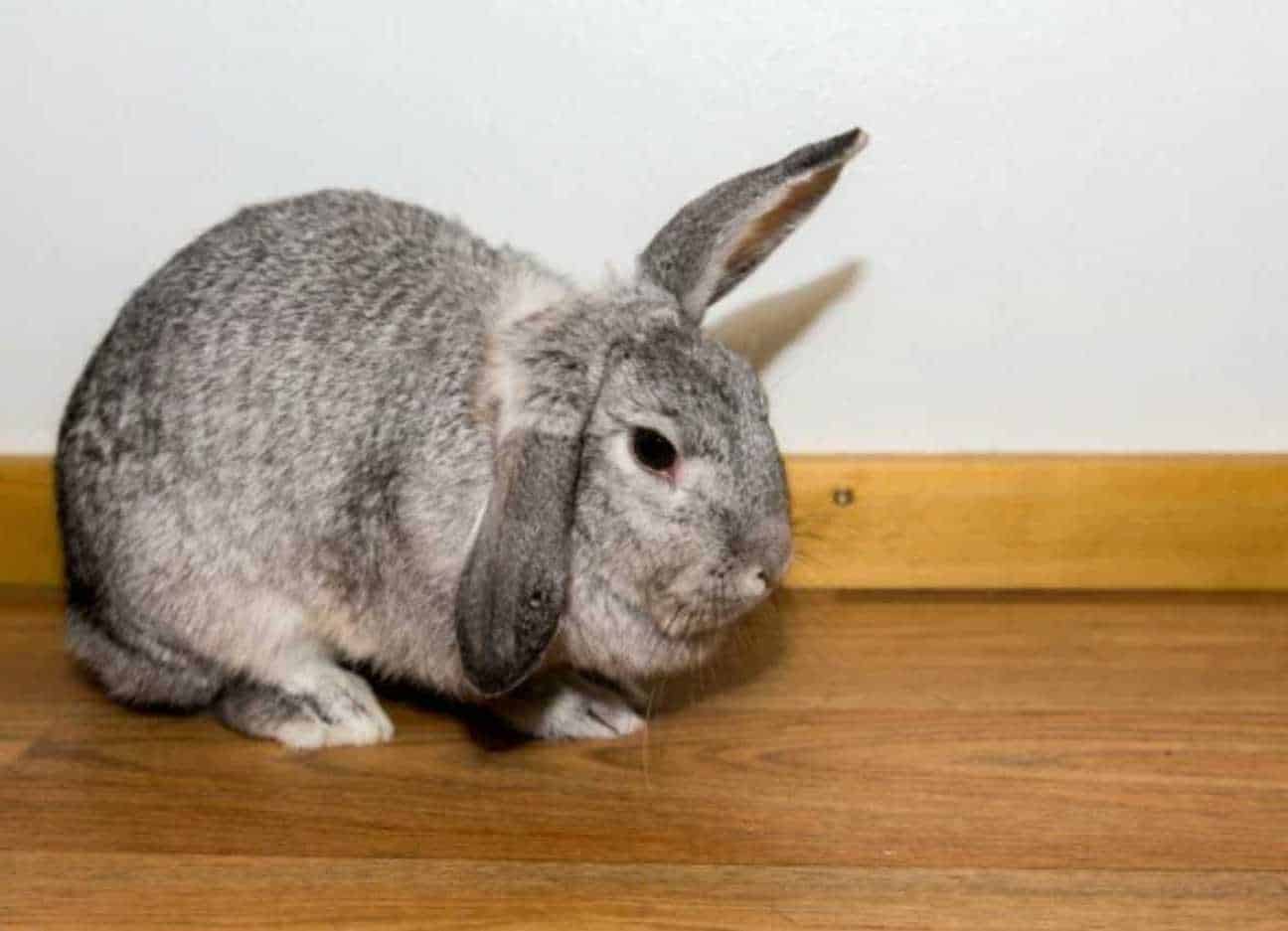
Rabbit in hunching position looks uncomfortable. There is tension in their front paws to avoid pressing their belly into the ground. If you see them in this position, look at their eyes; when their eyes are squinting than normal, there is something wrong with their digestive tract.
Watch your rabbit closely when eating or pooping. If their body language does not change, it is time to bring your rabbit to the vet. Rabbits are prone to digestive tract problems such as GI stasis that require medical attention.
Mounting
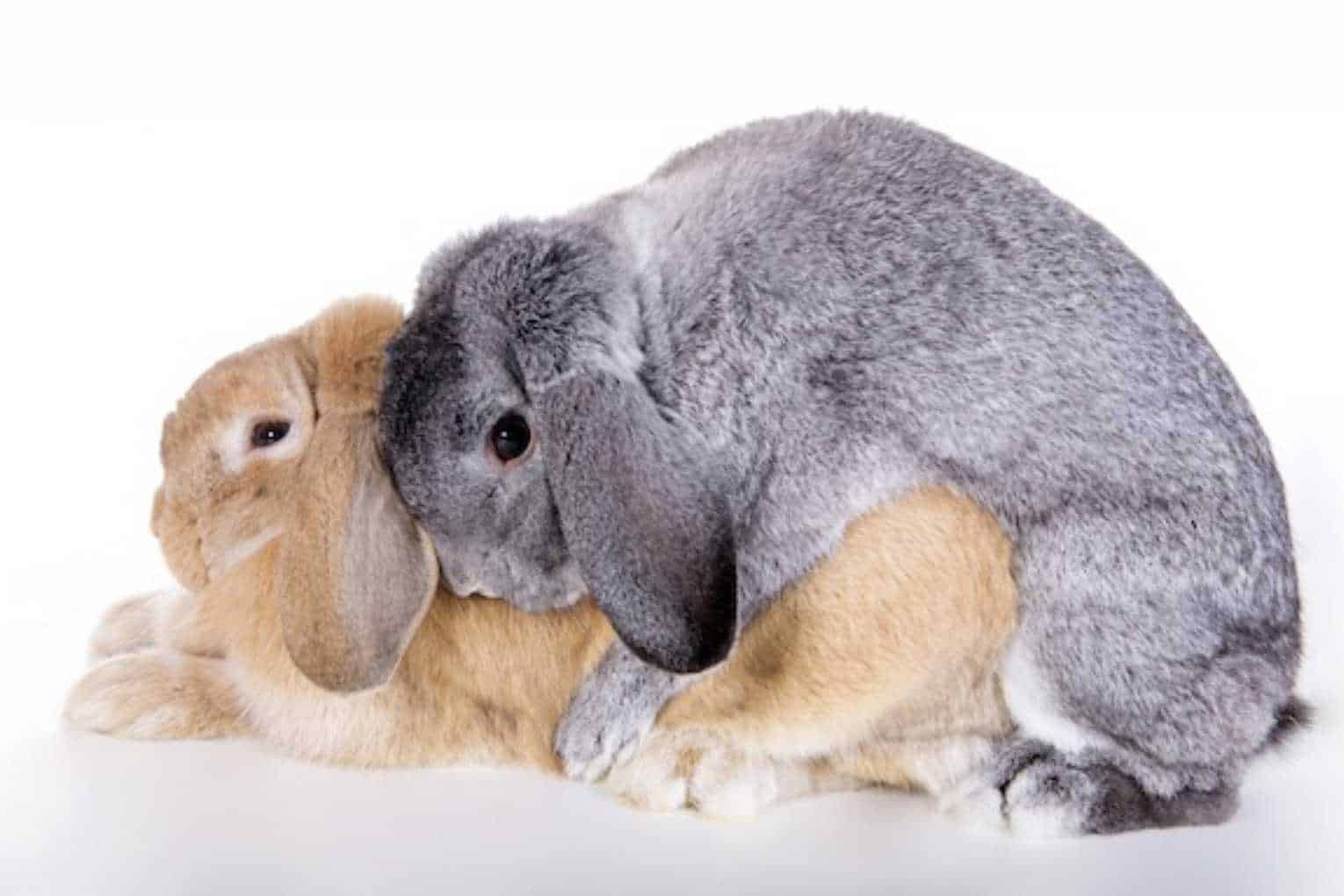
You might find it silly when rabbits mount another rabbit. It might be a sexual behavior, but if your rabbit is doing it on the same gender, they exert dominance.
Playing
Rabbits feel bored too. You have to provide interactive toys with your rabbits to keep them entertained. Rabbits love to throw and play with their toys. You must know how to play with your rabbit to ensure they will not throw things around when bored or frustrated.
Some rabbits throw their food or water bowl when bored inside their tiny enclosure.
Shrill Scream
It is rare for a rabbit to scream. Only rabbits that are experiencing extreme pain let out a shrill scream. Your rabbit must be in distress, and it must be feeling severe pain or dying.
Consider the scream a vocal cue to understand that your rabbit is in pain. Seek immediate medical attention to the nearest vet.
Teeth Grinding or Purring
Rabbits purr as cats do, but they are not exactly the same; you hear soft teeth grinding when you listen closely. If you put your hands on their head, you will feel a slight vibration from their teeth grinding.
However, there is nothing to worry about this. Rabbits purr when they are happy and contented. [Rabbit Teeth Grinding: Definition, Symptoms, Reasons, Prevention, Treatment]
Teeth Chattering
If you hear your rabbit having loud teeth chatters, this is a sign of extreme pain in your rabbit. Sometimes rabbit chatters their teeth looking uncomfortable or doing a hunched position.
You should not confuse this with teeth purring; teeth chattering sounds similar to grating or nails on a blackboard.
Tail Wagging
Rabbits wag their tail, but it does not mean they are happy, unlike dogs. When rabbits wag their tail, they are annoyed. In their language, tail wagging is rude.
It is hard to figure out what worries or makes your rabbit anxious. If your rabbit is acting strange and their behavior is quite concerning, it is best to refer them to a clinical animal behaviorist.
Train Rabbits to Reduce Unwanted Behavior
Similar to other pets, rabbits are trainable. Although rabbits can be extremely naughty and aggressive, you should not hit them when it happens.
Hitting animals is cruel; hurting or punishing them makes them angry and aggressive. More so, they do not know what trouble they have made.
You can use positive reinforcement to encourage your rabbits to behave properly. Training your pet is not easy, especially with the language barrier.
But, you can do these two humane things when disciplining your rabbit: shout “no” or thump your foot. It conveys to your rabbit that you are displeased with what they did.
Patiently correct your rabbit’s behavioral problems. If you need professional help, do not hesitate to bring them to a clinical animal behaviorist.
Final Thoughts
Have you observed your rabbit doing one of these behaviors? There must be something important that they want to let you know. That’s why to keep an eye on your rabbit to understand how they are feeling.